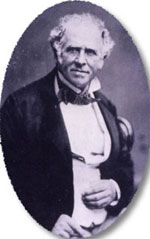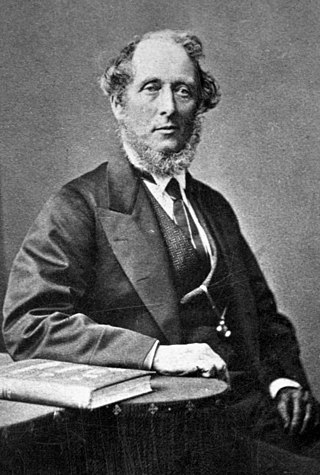Related Research Articles

The Territory of Iowa was an organized incorporated territory of the United States that existed from July 4, 1838, until December 28, 1846, when the southeastern portion of the territory was admitted to the Union as the state of Iowa. The remainder of the territory would have no organized territorial government until the Minnesota Territory was organized on March 3, 1849.

The Territory of Wisconsin was an organized and incorporated territory of the United States that existed from July 3, 1836, until May 29, 1848, when an eastern portion of the territory was admitted to the Union as the State of Wisconsin. Belmont was initially chosen as the capital of the territory. In 1837, the territorial legislature met in Burlington, just north of the Skunk River on the Mississippi, which became part of the Iowa Territory in 1838. In that year, 1838, the territorial capital of Wisconsin was moved to Madison.

The Legislative Council, or upper house, is one of the two chambers of the Parliament of South Australia. Its central purpose is to act as a house of review for legislation passed through the lower house, the House of Assembly. It sits in Parliament House in the state capital, Adelaide.

The Parliament of South Australia is the bicameral legislature of the Australian state of South Australia. It consists of the 47-seat House of Assembly and the 22-seat Legislative Council. General elections are held every 4 years, with all of the lower house and half of the upper house filled at each election. It follows a Westminster system of parliamentary government with the executive branch required to both sit in parliament and hold the confidence of the House of Assembly. The parliament is based at Parliament House on North Terrace in the state capital of Adelaide.

Sir George Gipps was the Governor of the British Colony of New South Wales for eight years, between 1838 and 1846. His governorship oversaw a tumultuous period where the rights to land were bitterly contested in a three way struggle between the colonial government, Aboriginal people and wealthy graziers known as squatters. The management of other major issues such as the end of convict transportation, large immigration programs and the introduction of majority elected representation also featured strongly during his tenure. Gipps is regarded as having brought a high moral and intellectual standard to the position of governor, but was ultimately defeated in his aims by the increasing power and avarice of the squatters.

Sir Dominick Daly was a British colonial public servant and administrator during the 19th century, who held positions in British North America, Tobago and South Australia.

The South Australia Act 1834, or Foundation Act 1834 and also known as the South Australian Colonization Act, was an Act of the Parliament of the United Kingdom which provided for the settlement of a province or multiple provinces on the lands between 132 degrees east and 141 degrees of east longitude, and between the Southern Ocean, and 26 degrees south latitude, including the islands adjacent to the coastline.

British colonisation of South Australia describes the planning and establishment of the colony of South Australia by the British government, covering the period from 1829, when the idea was raised by the then-imprisoned Edward Gibbon Wakefield, to 1842, when the South Australia Act 1842 changed the form of government to a Crown colony.
The history of South Australia includes the history of the Australian state of South Australia since Federation in 1901, and the area's preceding Indigenous and British colonial societies. Aboriginal Australians of various nations or tribes have lived in South Australia for at least thirty thousand years, while British colonists arrived in the 19th century to establish a free colony. The South Australia Act, 1834 created the Province of South Australia, built according to the principles of systematic colonisation, with no convict settlers.

The Port Phillip District was an administrative division of the Colony of New South Wales from 9 September 1836 until 1 July 1851, when it was separated from New South Wales and became the Colony of Victoria.
The Australian colonies and in the nineteenth century created offices involved in dealing with indigenous people in the jurisdictions.

Sir Roger Therry was an Irish-Australian jurist and member of the New South Wales Legislative Council.

Lieutenant Colonel George Barney was a military engineer of the Corps of Royal Engineers and became Lieutenant Governor of the Colony of North Australia.

Sir James Hurtle Fisher was a lawyer and prominent South Australian pioneer. He was the first Resident Commissioner of the colony of South Australia, the first Mayor of Adelaide and the first resident South Australian to be knighted.

Robert Gouger was one of the founders of South Australia and the first Colonial Secretary of South Australia.

George Milner Stephen, often written G. Milner Stephen, was a South Australian and Victorian politician and faith healer.

The attorney-general of South Australia is the Cabinet minister in the Government of South Australia who is responsible for that state's system of law and justice. The attorney-general must be a qualified legal practitioner, although this was not always the case.

The principles of the current Constitution of South Australia, also known as the South Australian Constitution, which includes the rules and procedures for the government of the State of South Australia, are set out in the Constitution Act 1934. Its long title is "An Act to provide for the Constitution of the State; and for other purposes".
This is a list of members of the South Australian Legislative Council from 1843 to 1851. Beginning with the Royal Instructions gazetted 15 June 1843, there were four official and four non-official members of the legislative council consisting of: the governor, colonial secretary, advocate-general, and registrar-General with four non-official members being nominated by the Crown. The council was the only chamber of government until the House of Assembly was created in 1857.
Lieutenant George Frederick Dashwood RN, frequently referred to as "Captain Dashwood", was a naval officer, public servant and politician in South Australia. He was appointed an acting member of the Legislative Council of South Australia, serving from June 1843 to June 1844.
References
- 1 2 "Statistical Record of the Legislature 1836–2007" (PDF). Parliament of South Australia. Archived from the original (PDF) on 12 March 2011. Retrieved 19 September 2014.
